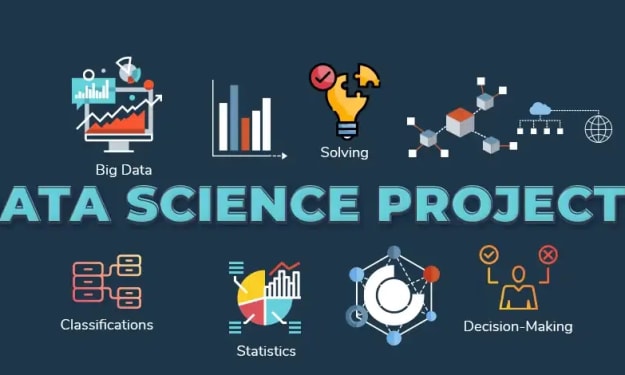Optimizing Data Processing Pipelines
This blog explains how the data processing pipeline works

Data processing pipelines are integral to modern data science workflows, ensuring the efficient transformation, analysis, and management of large datasets. Optimizing these pipelines is crucial for improving performance, reducing costs, and achieving accurate results. In this blog, we'll explore various strategies to optimize data processing pipelines, and why taking a data science course offline can provide you with the hands-on experience needed to master these techniques.
Understanding Data Processing Pipelines
A data processing pipeline is a series of steps or stages that data goes through from collection to analysis. These stages often include data ingestion, cleaning, transformation, storage, and analysis. Optimization involves enhancing these stages to make the pipeline more efficient, scalable, and reliable.
Steps to Optimize Data Processing Pipelines
1. Data Ingestion Optimization
Efficient data ingestion is the first step in optimizing a data processing pipeline. Here’s how you can improve it:
Batch vs. Stream Processing: Choose between batch processing (processing data in large blocks) and stream processing (processing data in real-time) based on your use case. Batch processing is ideal for large volumes of data that can be processed at intervals, while stream processing is suited for real-time analytics.
Parallel Processing: Use parallel processing to handle multiple data sources simultaneously. This can significantly speed up the ingestion process.
2. Data Cleaning and Transformation
Data cleaning and transformation are critical for ensuring data quality and usability. Optimization techniques include:
Automated Cleaning Scripts: Develop automated scripts to handle common data cleaning tasks such as removing duplicates, filling missing values, and correcting errors.
Efficient Data Transformation: Use vectorized operations and in-memory processing frameworks like Apache Spark to speed up data transformation tasks.
3. Storage Optimization
Efficient data storage is crucial for quick access and retrieval. Consider the following:
Data Partitioning: Partition your data based on criteria like time, region, or other relevant dimensions. This can enhance query performance by allowing the system to scan only relevant partitions.
Compression: Use data compression techniques to reduce storage costs and improve I/O performance. Formats like Parquet and ORC offer efficient compression and are optimized for read-heavy workloads.
4. Processing Frameworks
Choosing the right processing framework can make a significant difference:
Apache Spark: Known for its speed and scalability, Spark is excellent for big data processing due to its in-memory computation capabilities.
Apache Flink: Ideal for real-time data processing and stream analytics, offering low-latency and high-throughput.
5. Workflow Orchestration
Workflow orchestration tools help manage and optimize the execution of pipeline tasks:
Apache Airflow: A popular tool for orchestrating complex workflows, allowing for scheduling, monitoring, and managing data pipelines.
Luigi: Developed by Spotify, Luigi is another powerful tool for building complex pipelines with dependencies.
6. Monitoring and Logging
Continuous monitoring and logging are essential for identifying bottlenecks and ensuring smooth pipeline operation:
Real-Time Monitoring: Implement real-time monitoring to track the performance of your data pipeline. Tools like Prometheus and Grafana can provide valuable insights.
Comprehensive Logging: Maintain detailed logs for all stages of the pipeline. This helps in troubleshooting issues and understanding pipeline performance.
7. Scalability and Resource Management
Ensuring your pipeline can scale efficiently is vital:
Auto-Scaling: Use cloud services with auto-scaling capabilities to handle varying workloads without manual intervention.
Resource Allocation: Optimize resource allocation by tuning configurations based on workload requirements. This includes setting appropriate memory, CPU limits, and parallelism.
The Importance of Hands-On Learning
While online resources provide valuable insights into optimizing data processing pipelines, an data science course offline offers several unique benefits:
Hands-On Practice: Offline courses often provide hands-on practice with real datasets and tools, allowing you to apply optimization techniques in practical scenarios.
Peer Interaction: Interacting with peers and instructors in a physical classroom setting can enhance learning through collaboration and direct feedback.
Immediate Support: Access to immediate support and guidance from experienced instructors can accelerate your understanding and application of complex concepts.
Conclusion
Optimizing data processing pipelines is crucial for improving performance, reducing costs, and ensuring accurate results. By focusing on efficient data ingestion, cleaning, transformation, storage, and processing frameworks, you can build robust and scalable pipelines. For those serious about mastering these skills, enrolling in a data science course offline can provide the hands-on experience and interactive learning environment needed to excel in this field. Investing in quality education will equip you with the knowledge and practical skills to optimize data processing pipelines effectively.
About the Creator
Fizza Jatniwala
Fizza Jatniwala, an MSC-IT postgraduate, serves as a dynamic Digital Marketing Executive at the prestigious Boston Institute of Analytics.
Enjoyed the story? Support the Creator.
Subscribe for free to receive all their stories in your feed. You could also pledge your support or give them a one-off tip, letting them know you appreciate their work.





Comments
There are no comments for this story
Be the first to respond and start the conversation.